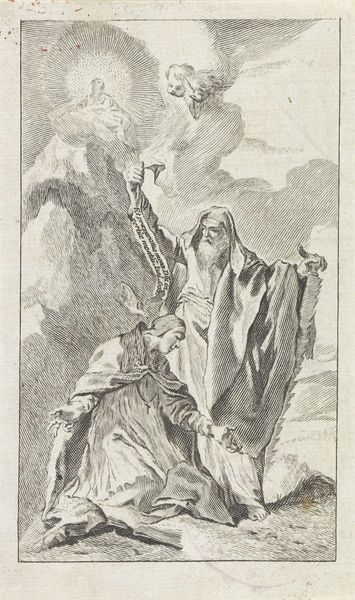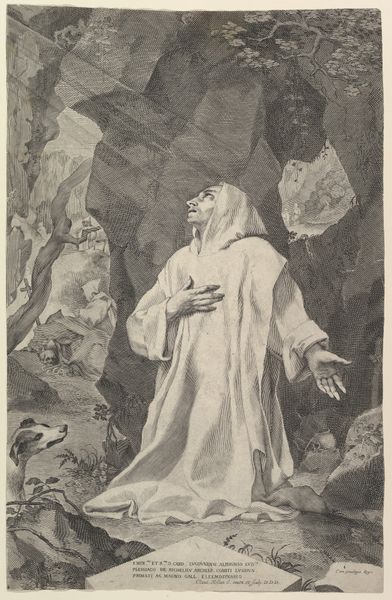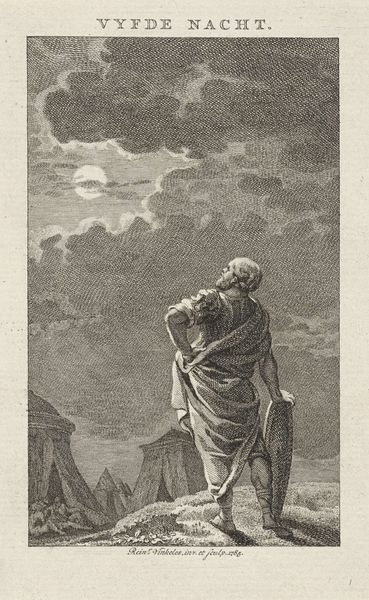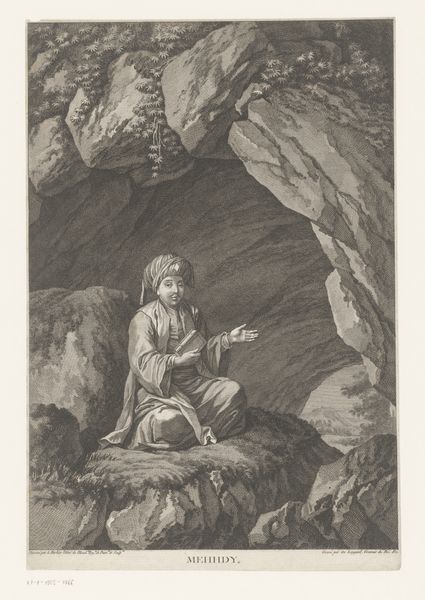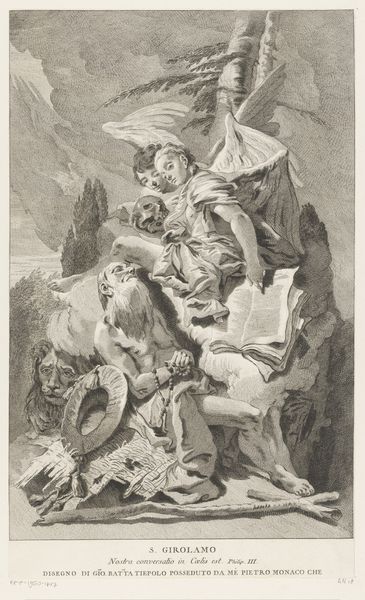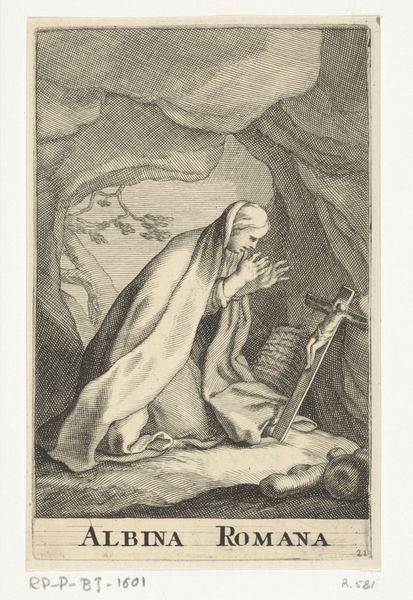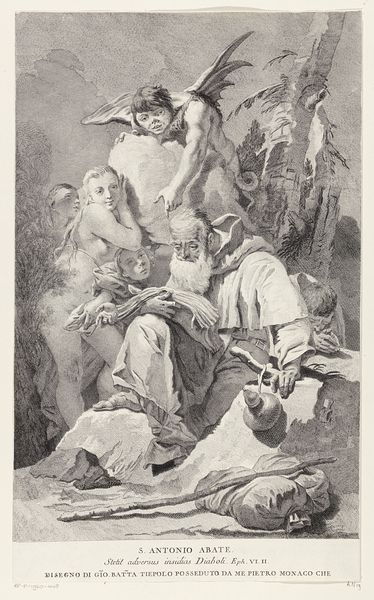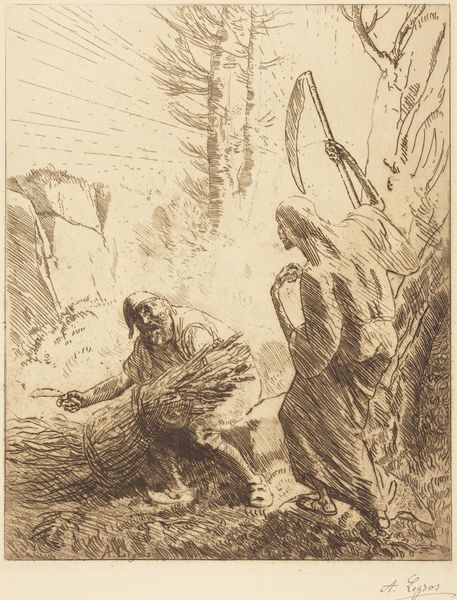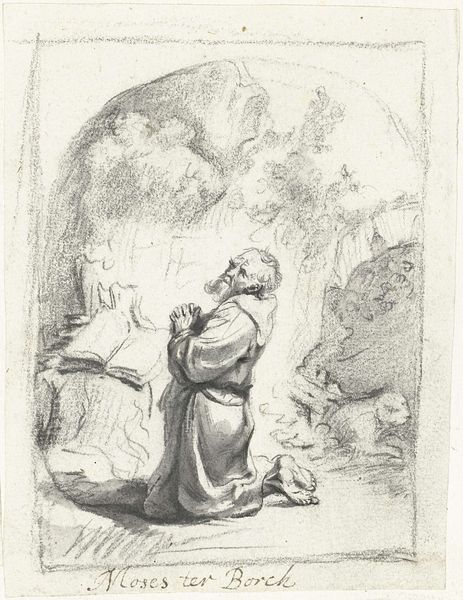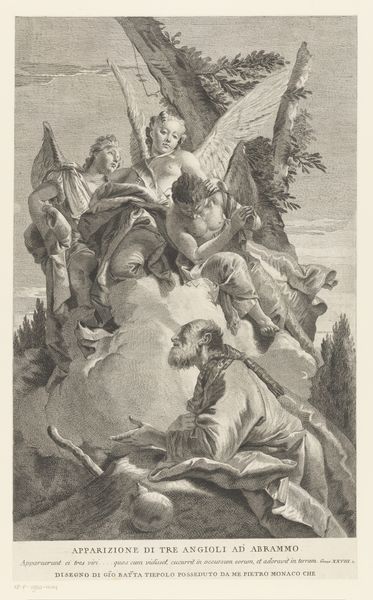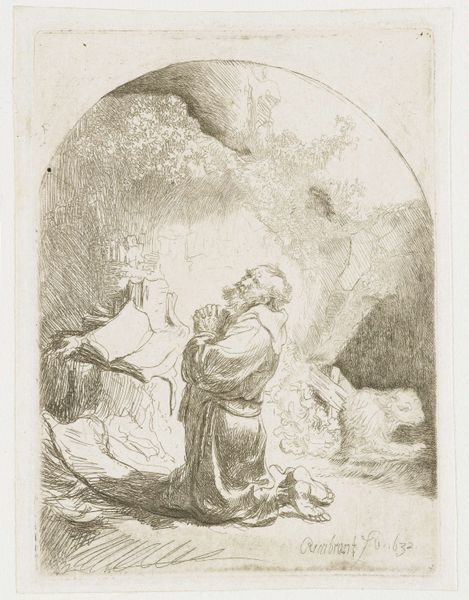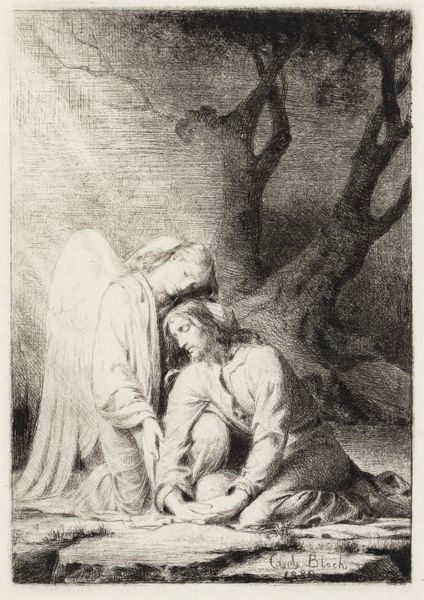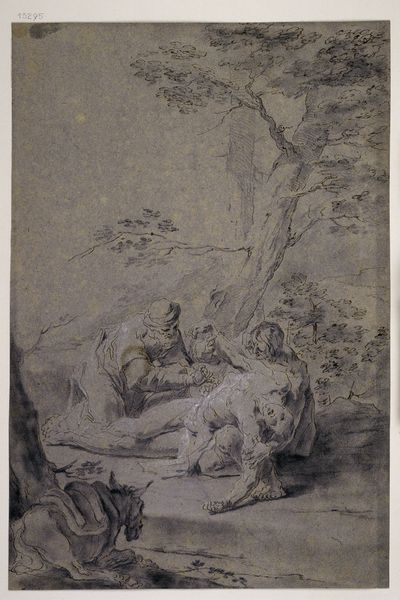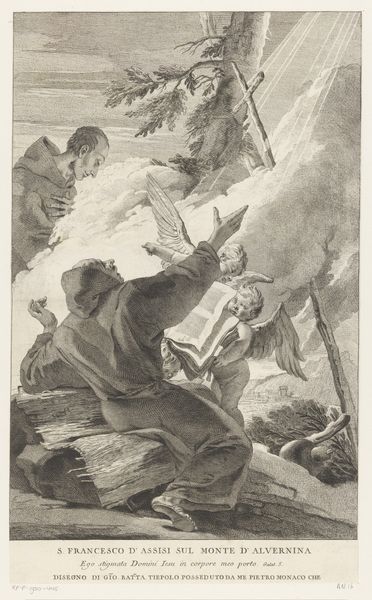
drawing, print, paper, ink, charcoal
#
drawing
# print
#
landscape
#
charcoal drawing
#
figuration
#
paper
#
oil painting
#
ink
#
pencil drawing
#
charcoal
#
charcoal
Dimensions: 140 × 87 mm
Copyright: Public Domain
Editor: Here we have an intriguing work, "Man Praying in Wilderness," created by Nicolas Poussin, likely as a drawing, though its exact date is unknown. I am immediately drawn to the visible charcoal and ink strokes; the medium speaks volumes to me. What can you tell me about this work? Curator: Notice the paper's texture, a visible element in the overall composition. What was the purpose of a drawing like this, given the materials at hand? Was it a study, a preparation for a larger work? Consider the cost and availability of materials in Poussin's time. Who was buying art? Who had access to pigments? And how might this influence the choices an artist makes regarding scale, the use of labor-intensive processes or simpler ones? Editor: That makes me wonder about Poussin’s studio. Was this a solo creation or a workshop production? Did he personally grind the charcoal, mix the ink, or would assistants have handled some of those tasks? Curator: Exactly! Think about the division of labor, the hierarchies within the artistic workshop. It's also essential to remember that Poussin’s landscapes often reflect an idealized, classical vision, filtered through his understanding and manipulation of the available materials. Even the 'wildness' depicted here is carefully constructed using charcoal and ink. This wasn’t just any paper he found. This paper served a purpose. Editor: I hadn’t considered that this “wilderness” is actually the result of calculated and manipulated material processes! The availability and cost factors really shifted my perspective on the meaning of this drawing. Curator: Precisely. It moves our appreciation away from simple aesthetic enjoyment toward a deeper engagement with art’s history as a production and economic force. Hopefully, thinking materially helps unpack our assumptions about even what counts as nature itself.
Comments
No comments
Be the first to comment and join the conversation on the ultimate creative platform.
